Exposición del XVII Certamen Nacional de pintura Ciudad de Daimiel

Después de 14 años de parón, se ha vuelto a celebrar en mi localidad el Certamen Nacional de Pintura Ciudad de Daimiel, en su vigesimoséptima edición. El concurso llevaba suspendido desde el año 2008, a pesar del prestigio con el que contaba en la región. Tenía ya más de 25 años de solera, y la importante dotación de sus premios siempre atraía a pintores destacados del panorama nacional, que participaban con obras de gran calidad artística. La exposición de los cuadros seleccionados, que solía llevarse a cabo durante las fiestas patronales de Daimiel, se había convertido en uno de los eventos culturales más importantes del año. Nos acercaba al pueblo un interesante panorama de lo que se estaba cociendo en el mundo del arte.
Bueno, pues este verano se volvió a convocar el certamen, y ahora, justo antes de Navidad, se acaba de inaugurar la exposición con las obras selecionadas por el jurado. De los 55 trabajos presentados, 24 conforman la muestra que se puede contemplar en la Casa de la Cultura. De ellos, dos han sido galardonadas con el primer premio, de 6000 € y el segundo, de 4000 €. Yo ya me he podido acercar a echar un primer vistazo. Como la exposición estará abierta hasta la entrega de premios, el 30 de enero, no será la última vez que me pase. La verdad es que me ha gustado bastante. Creo que, si el certamen continúa los próximos años, puede volver a acercarse a lo que fue en su día. Por el momento, voy a ir compartiendo por aquí unas fotografías de las distintas obras, junto con algunas de mis impresiones.

Desde el canal de Venecia, de Francisco Escalera González
Un cuadro cuya viveza y luminosidad me trajo a la mente los clásicos paisajes venecianos de Canaletto.

Frío y melancolía, de Guillermo Sedano Vivanco
Me encanta la limpieza y aparente sencillez de esta obra. Me parece magistral el uso de esa paleta de colores tan limitada, donde prevalece el blanco, en la tierra y en el cielo, solamente interrumpido por algunas manchas de grises y marrones para crear las pequeñas notas de paisaje. También cómo consigue el pintor una textura tan vívida de la nieve. Se puede sentir el frío.
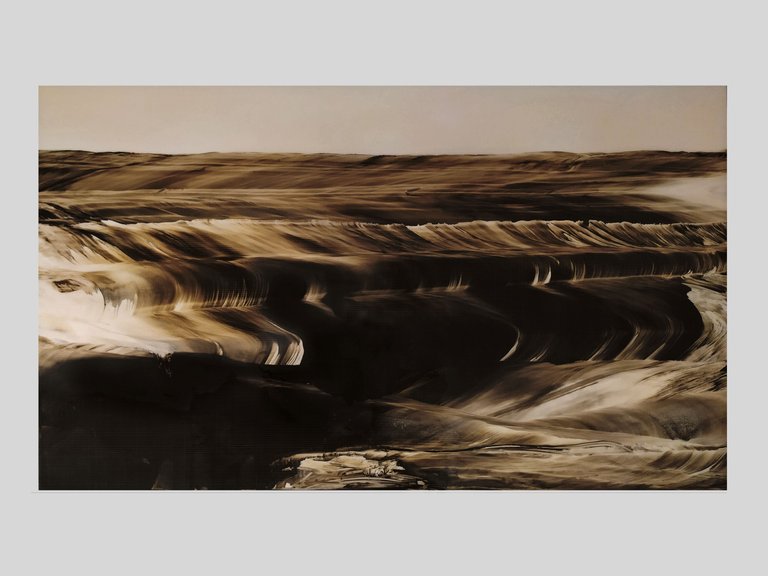
Pintura cortada nº 13, de Jorge Llopis Jordá
Cuadro realizado en tinta al aceite, con una capa cubriente de resina exposi a la que se le han realizado cortes horizontales y verticales en damero. Consigue un efecto de ondulación y movimiento, y de textura "plástica" muy logrados.
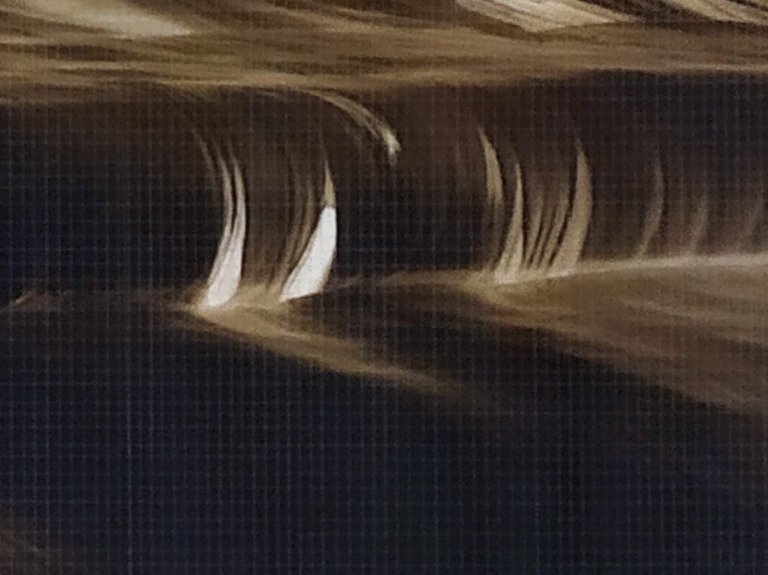
Detalle
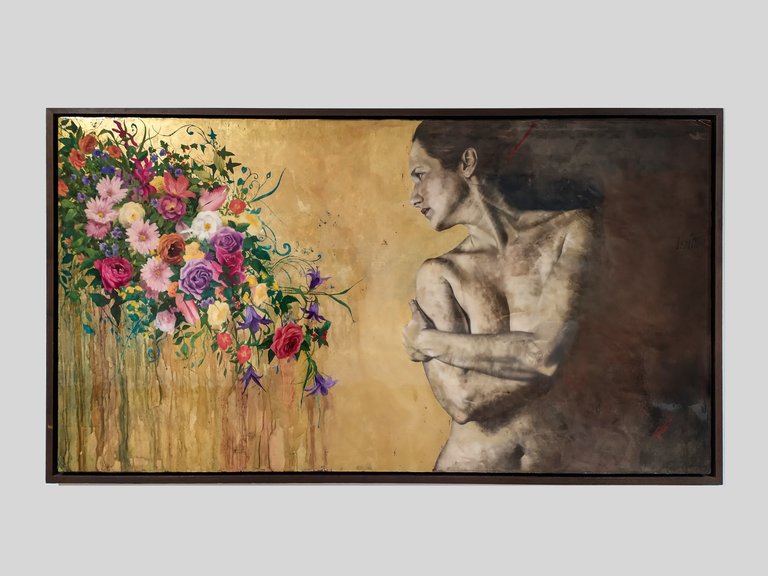
Abril de 2020, de Caroline Denise Culubret Worms
Un desnudo muy interesante en pastel, grafito, óleo y, aunque es difícil de apreciar en la fotografía, brillante pan de oro en lo que es todo el fondo amarillo.
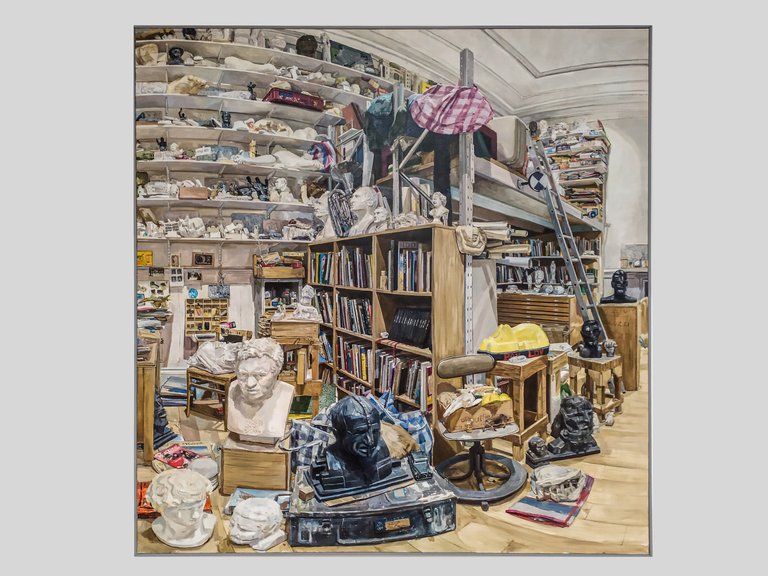
Estudio de Paolozzy X, por David Martínez Calderón
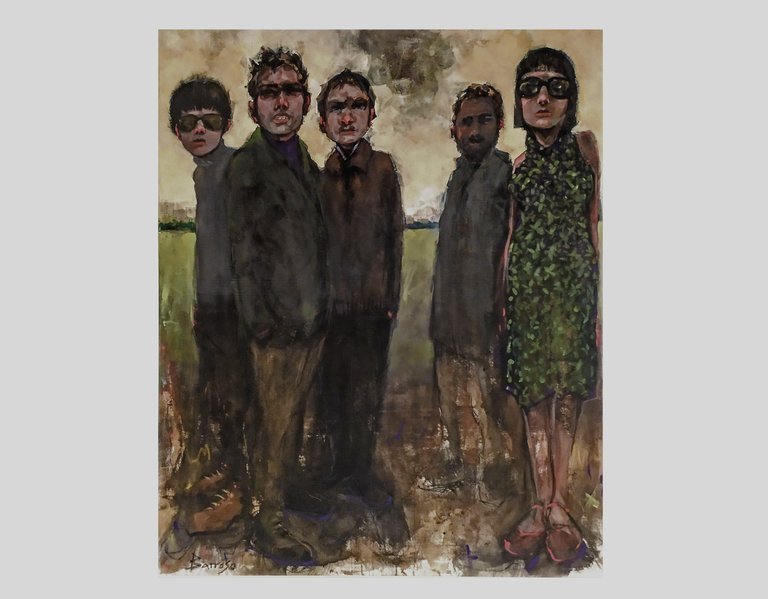
Positivos, por Ángel Barroso Crespo
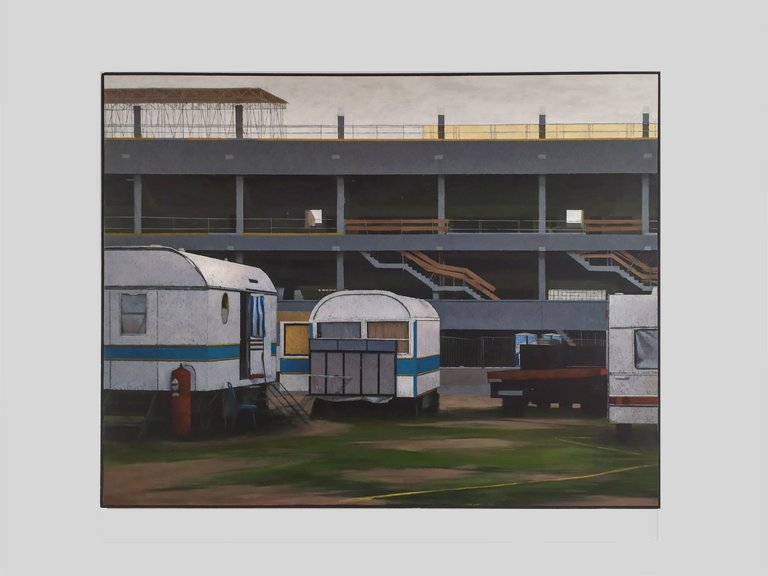
Juraría que he visto a Frintz Honka, de Guillermo Masedo
Un acrílico sobre tabla que me ha recordado mucho esa sensación de soledad y vacío de los espacios urbanos de las pinturas de Edward Hopper.
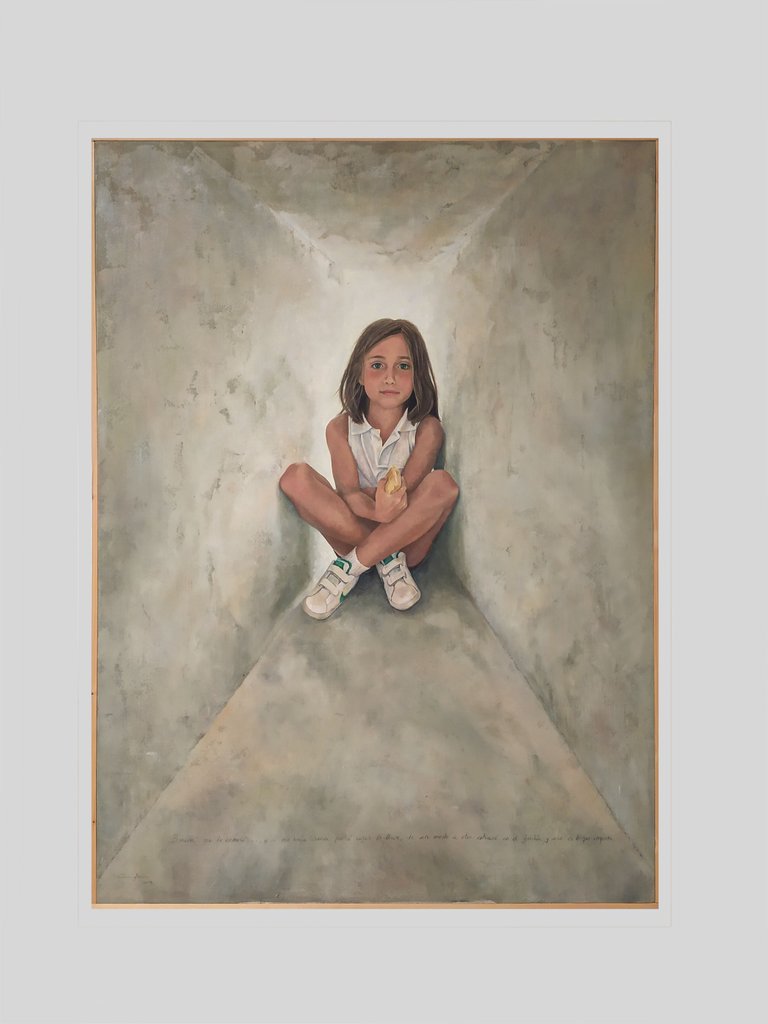
Y si me hace crecer, de Ana María Parra García
Cuadro que juega con con la famosa escena de Alicia en el país de las maravillas (es lo que se lee en el pequeño texto de la parte de abajo). Me gusta mucho el manejo de la perspectiva y la iluminación del espacio cerrado, que logra diluir la sensación de agobio o claustrofobia que debería provocar este retrato.

Daslied Von Der Erde, de Manuel Castillero Ramírez
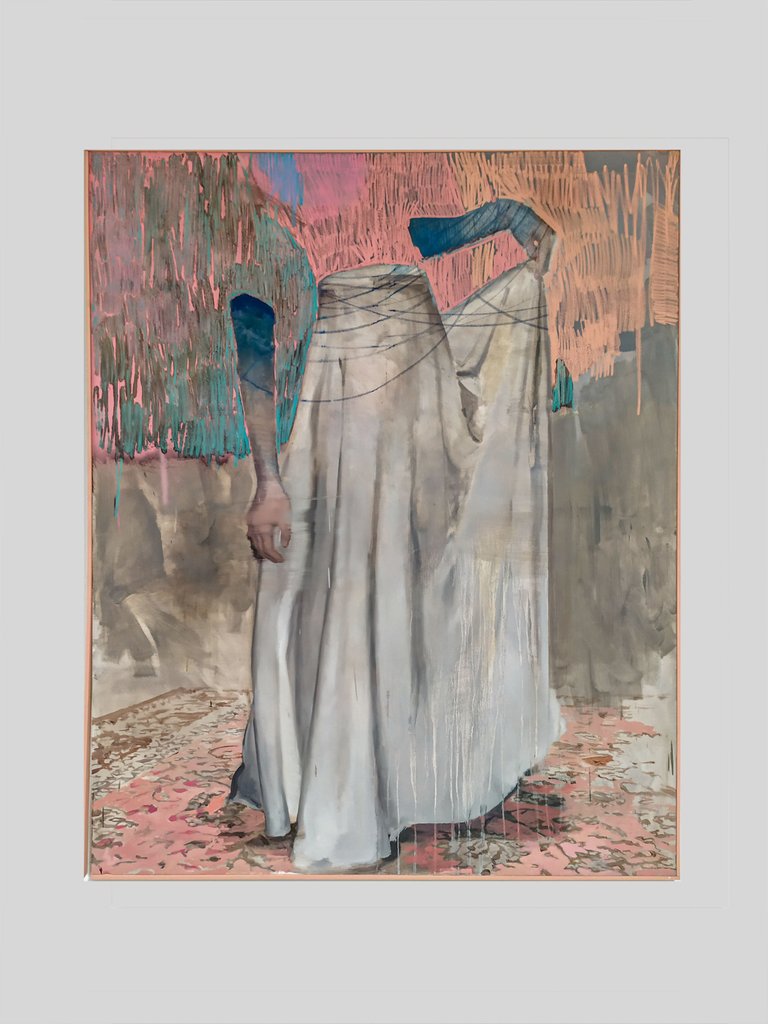
Parallel waves, de Vicente García Lázaro

No soy de madera, de Francisco-Abel Vellarino Díaz
Una broma de metalenguaje artístico ya que se trata de óleo, acrílico y lápiz sobre tabla, por lo que, en esencia, SÍ que es de madera.

La montaña magica, de Paco Diaz Salas
De este cuadro tengo que destacar la iluminación y textura tan logradas en el motivo principal, que dan una sensación casi fotorrealística.

Azul, de Roberto Coromina Navarro
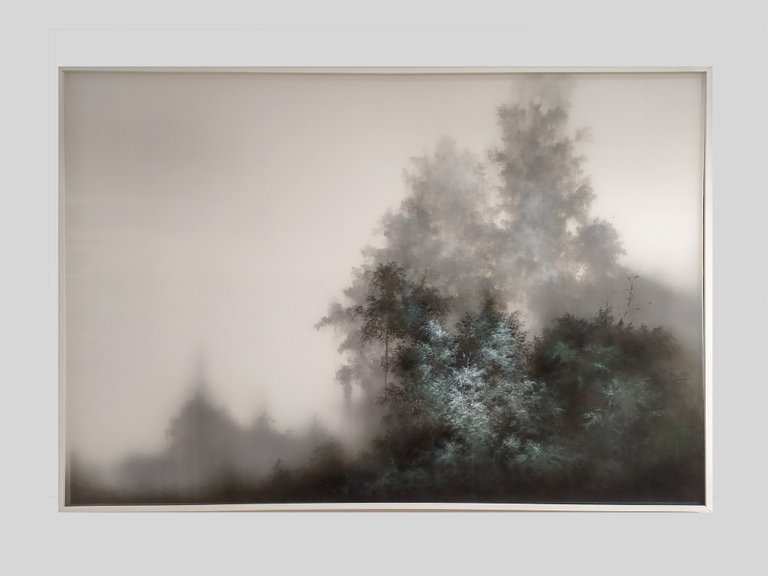
Monologue, de Kihong Chung
Un cuadro que llama mucho la atención, ya que está pintado en dos técnicas y dos soportes superpuestos con unos centímetros de separación. En primer término, acrílico sobre un acetato traslúcido, y en el fondo, tinta china sobre lienzo de lino. Juntos conforman un paisaje de naturaleza que provoca un efecto de paralaje, de "scrolling", en el espectador, cuando sus ojos notan que las capas de mueven a distinta velocidad. A eso se añade la sensación de neblina y profundidad en el motivo del fondo porque el acetato que tiene delante no es totalmente transparente.

Detalle
Esto es todo, por el momento. Aunque sé que no es lo mismo que disfrutar una exposición en persona, espero que os gustase lo que habéis visto en esta entrada, y que os haya resultado entretenida.
Un saludo.

After a break of 14 years, the 27th edition of the National Painting Competition "Ciudad de Daimiel" has been held again in my town. The contest had been suspended since 2008, despite its prestige in the region. It had been held for more than 25 years, and the significant prize money always attracted outstanding painters from the national scene, who participated with works of great artistic quality. The exhibition of the selected paintings, which used to take place during Daimiel's local festivities, had become one of the most important cultural events of the year. It provided the town with an interesting panorama of what was happening in the world of art.
Well, this summer the competition was reconvened, and now, just before Christmas, the exhibition with the paintings selected by the jury has just been inaugurated. Of the 55 works submitted, 24 make up the exhibition which can be seen in the Casa de la Cultura. Of these, two have been awarded the first prize of 6000 € and the second prize of 4000 €. I have already been able to take a first look. As the exhibition will be open until the prize-giving ceremony on 30th January, it will not be the last time I visit it. The truth is that I liked it very much. I think that, if the competition continues in the next few years, it can become again what it once was. For the time being, I will share here some photographs of the different works, along with some of my impressions.

From the Venice canal, by Francisco Escalera González
A painting whose vividness and luminosity brought to mind Canaletto's classic Venetian landscapes.

Cold and melancholy, by Guillermo Sedano Vivanco
I love the cleanliness and apparent simplicity of this work. I find masterly the use of such a limited palette of colours, where white predominates in the earth and sky, only interrupted by some grey and brown spots to create the small notes of the landscape. I also find it brilliant how the painter achieves such a vivid texture of the snow. You can feel the cold.

Cut painting no. 13, by Jorge Llopis Jordá
The painting is done in oil-based ink, with a covering layer of exposi resin to which horizontal and vertical checkerboard cuts have been made. It achieves an effect of undulation and movement, and a very successful "plastic" texture.

Detail

April 2020, by Caroline Denise Culubret Worms
A very interesting nude. Made in pastel, graphite, oil and, although it is difficult to see in the photograph, shiny gold leaf on what is all yellow background.

Paolozzy studio X, by David Martínez Calderón

Positives, by Ángel Barroso Crespo

I swear I've seen Frintz Honka, by Guillermo Masedo
An acrylic on board that reminded me a lot of that feeling of loneliness and emptiness of the urban spaces in Edward Hopper's paintings.

What if it makes me grow?, by Ana María Parra García
Picture that evokes the famous scene from Alicia in Wonderland (this is what you can read in the small text at the bottom). I really like the handling of the perspective and the lighting of the enclosed space, which manages to dilute the feeling of suffocation or claustrophobia that this portrait should provoke.

Daslied Von Der Erde, by Manuel Castillero Ramírez

Parallel waves, by Vicente García Lázaro

I'm not made of wood, de Francisco-Abel Vellarino Díaz
A joke of artistic metalanguage as the painting is made in oil, acrylic and pencil on board, so HE IS essentially made of wood.

The magic mountain, by Paco Diaz Salas
I must highlight the lighting and the texture of the main motif in this painting, which give an almost photorealistic feeling.

Blue, by Roberto Coromina Navarro

Monologue, by Kihong Chung
A painting that attracts a lot of attention, as it is painted with two pictorial techniques and two superimposed supports a few centimetres apart. In the foreground we have acrylic on translucent acetate, and in the background, Indian ink on linen canvas. Together they form a landscape of nature that provokes an effect of parallax, of "scrolling", in the viewer, when his eyes notice that the layers move at different speeds. Added to this is the sense of mist and depth of the motif in the background, as the acetate in front is not completely transparent.

Detail
That's all, for the moment. Although I know it's not the same as enjoying an exhibition in person, I hope you liked what you saw in this post, and that you found it entertaining.
Best regards.

las imágenes usadas en el artículo son de mi autoría.

Puedes leerme también en mi Gabinete de historias curiosas, un blog dedicado a curiosidades históricas y otro tipo de contenido relacionado con el arte, la música y las humanidades, o en Va de romanos, mi web dedicada al mundo de la antigua Roma. O seguirme en mis redes sociales:



También puedes hacerte con alguno de mis diseños y trabajos artísticos en impresión bajo demanda en esta dirección..
